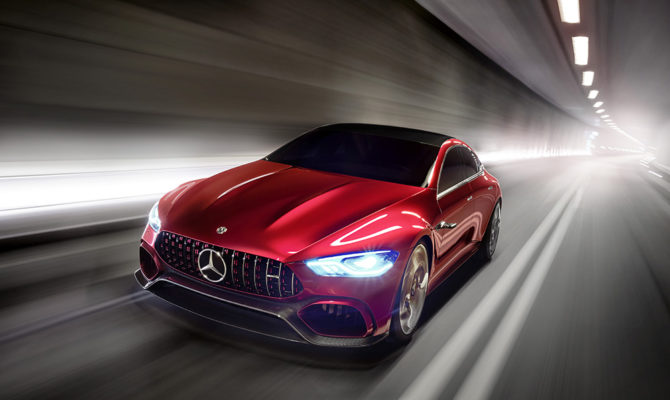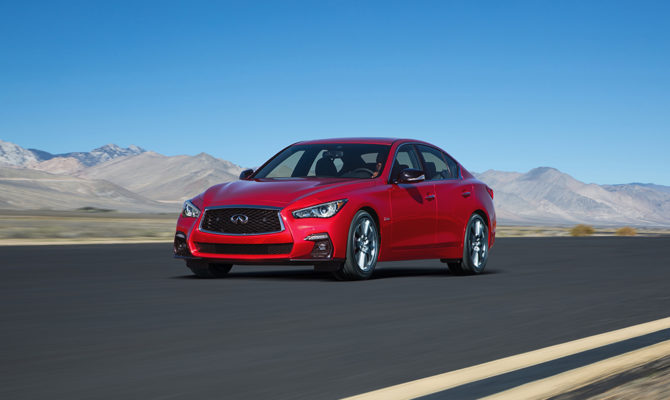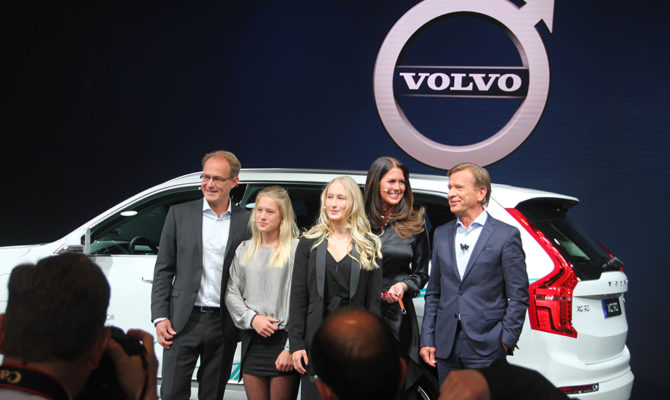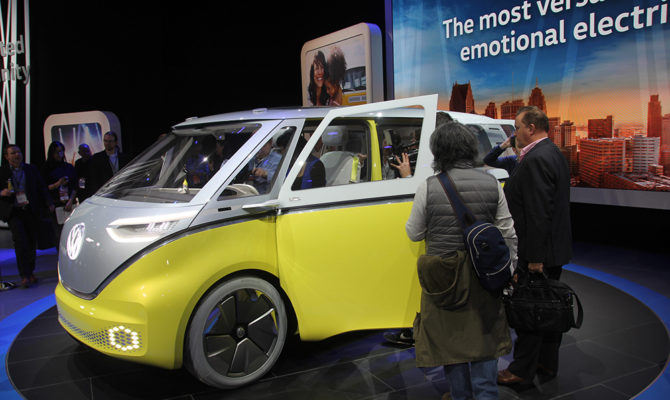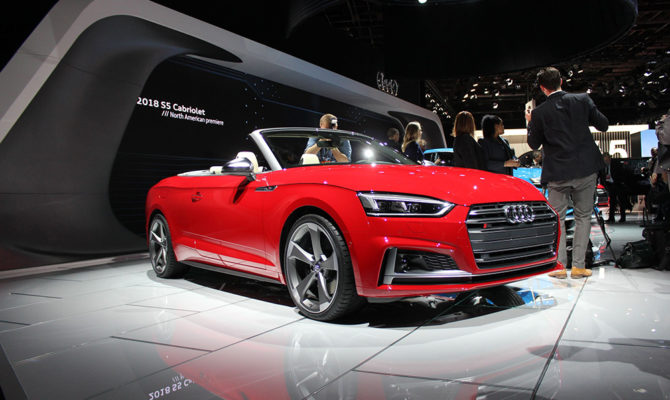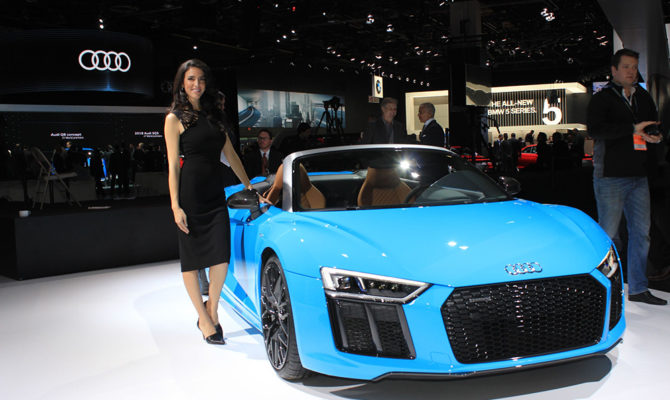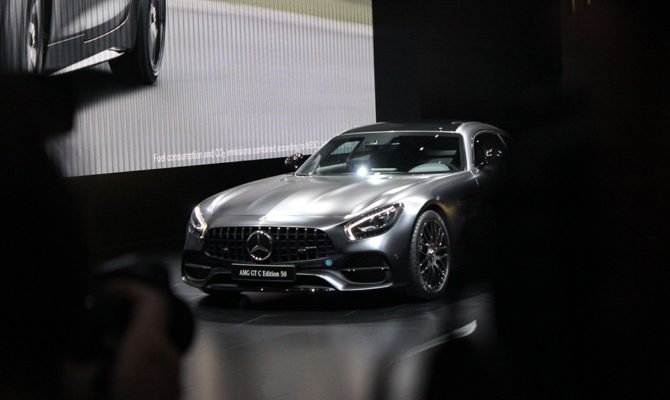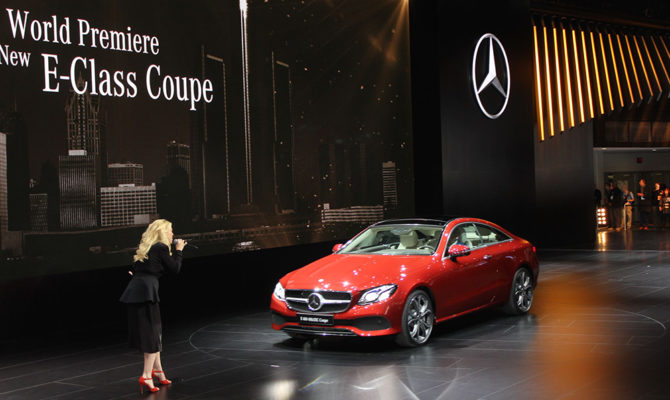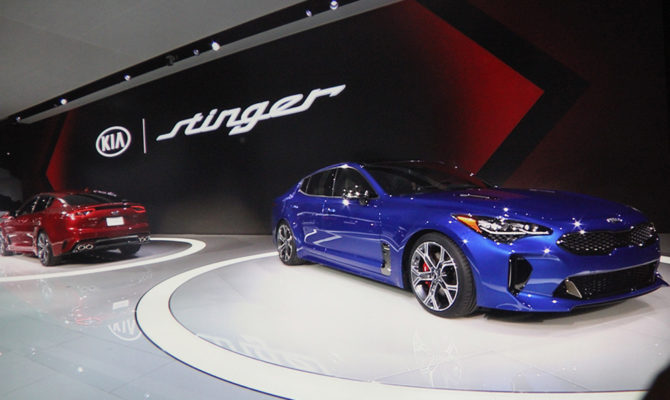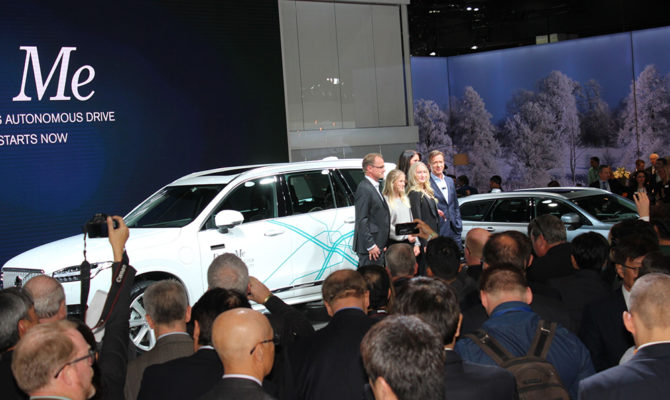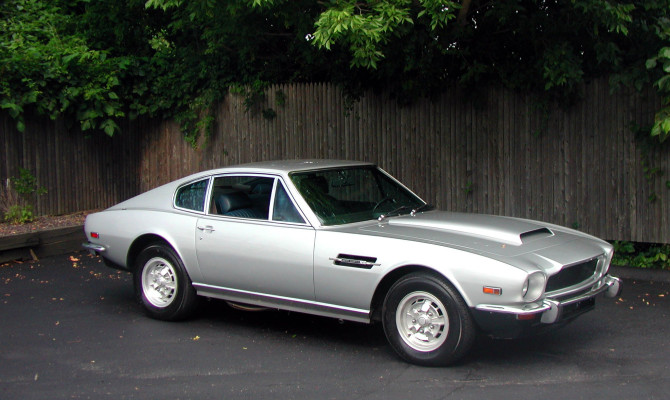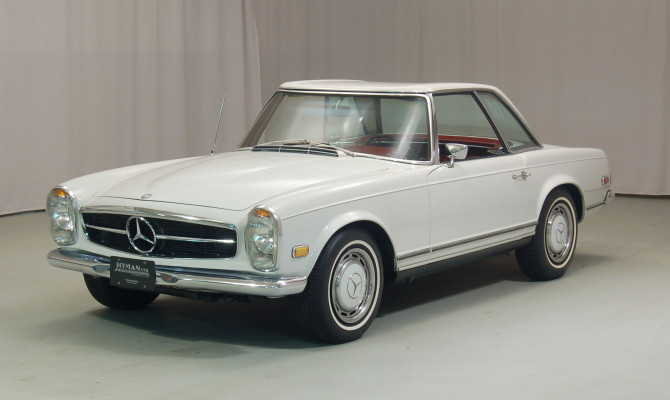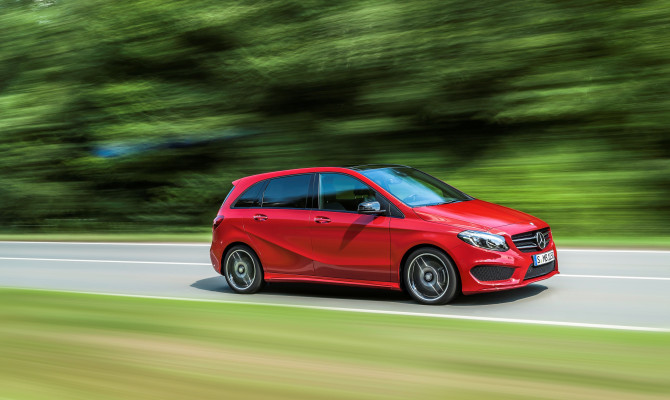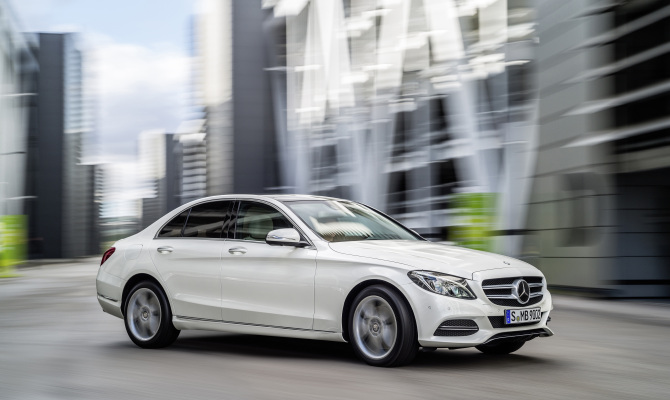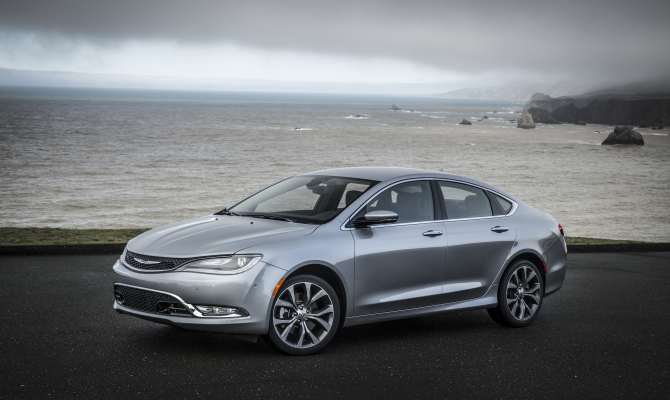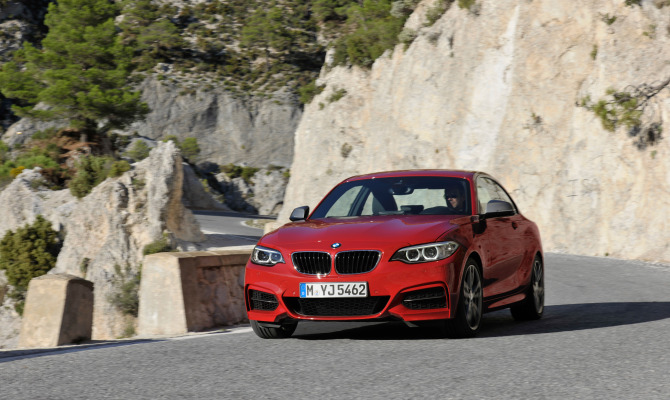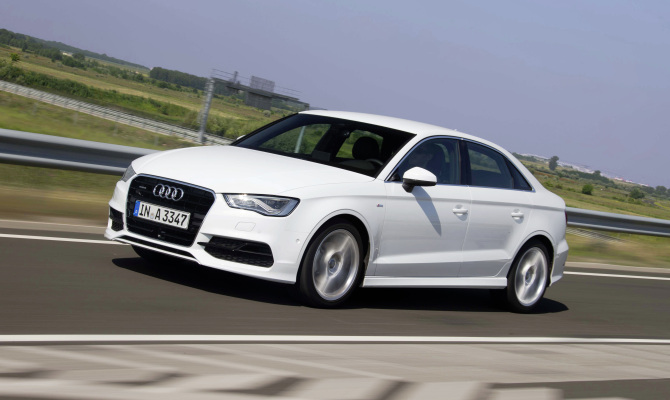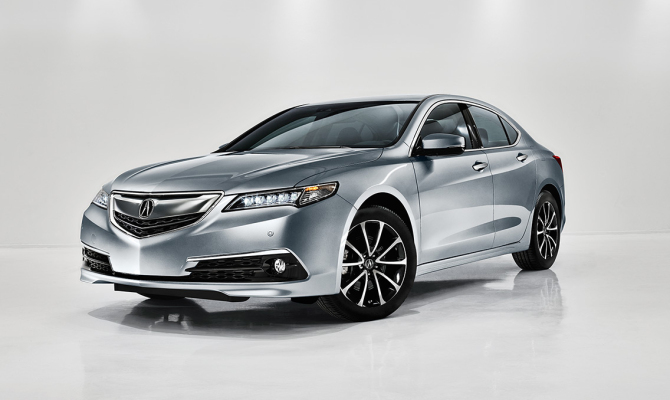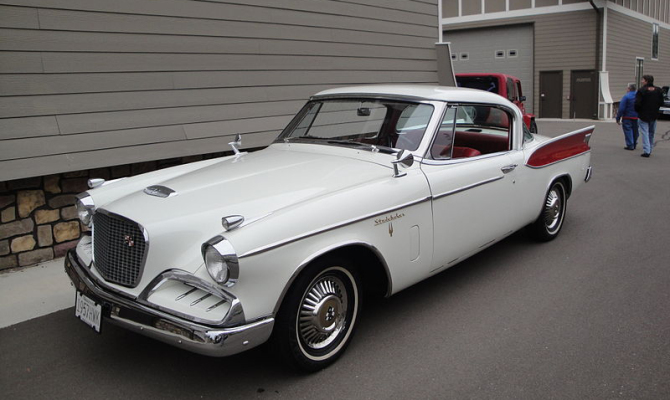The new Infiniti Q50 premium sports sedan made its global debut and Mercedes revealed an eye-catching sports car at the Geneva International Motor Show.
The Hong Kong-based company says its new Q50 features “innovative technologies that empower and support the driver, taking a holistic approach to performance.”
As the company’s core brand-building model and best-selling vehicle worldwide, Infiniti has already introduced several world-first innovations with the existing Q50.
One of the available driver assistance technologies included in the new Q50 is second-generation Direct Adaptive Steering – a steer-by-wire system that supports the driver by providing smooth operation, more direct steering responses and easy maneuverability. Direct Adaptive Steering is a precursor to future steering systems that will form a key building block to achieving fully-autonomous driving.
The Q50 is powered by the award-winning 3.0-litre V6 twin-turbo engine from the new and exclusive ‘VR’ powertrain family, which was recently named on the prestigious 2017 Ward’s ’10 Best Engines’ list.
It also features a refreshed exterior and interior design – bringing the car in line with the brand’s ‘designed to perform’ ethos.
Over at the Mercedes display, there were gasps when, as part of the 50th anniversary of Mercedes-AMG, the covers were ripped off the stunning GT Concept show car.
This four-door coupe heralds a further extension of the AMG GT family, following the legacy of the SLS AMG and AMG GT, which were completely developed at AMG’s headquarters in Affalterbach. The designation and fundamental design elements on the front and rear end denote the family affiliation to the AMG GT. The “EQ Power+” badging on the mirror camera indicates the increased performance that can be expected from hybridization at AMG.
The AMG GT Concept uses a combination of an ultra-modern V8 gasoline engine and a high-performance electric motor, both intelligently networked with an extremely powerful yet lightweight battery concept. This performance hybrid powertrain offers an impressive electric range and the opportunity to generate a system output of up to 805 horsepower in its last level of development, and covers the sprint from 0-100 km/h in less than three seconds.
Detroit, MI – It’s been a while since I last attended the annual North American International Auto Show media preview so the invite to the 2017 edition was a treat.
The crowded media feeding frenzies were just the same as ever but the new vehicle intro events, however, tend to be tamer affairs these days. The emphasis is largely on corporate business not show business, which, of course, is sensible … yet, I do miss that old razzle dazzle!
Not here in person, but the Donald Trump-effect was evident, following the president-elect’s unpleasant utterings about manufacturers who shift production outside of the USA. Almost every auto industry spokesperson talked about American vehicle production numbers, American production content, American employment numbers or planned future growth in America, etc. Oddly enough, Chrysler (aka FCA) did not host an auto show press conference this year, in its home city!
The Ford media presentation was another low-key affair, with top executives mainly talking about future mobility, sustainability and autonomous driving. An updated F150 (all-new 3 years ago) was paraded but the big news for Ford fans is that Ranger, a midsize pickup truck, is back in 2019 and an all-new Bronco will follow in 2020. Both will be produced in a Ford assembly plant in Michigan, USA.
My favourite auto industry speaker was Carlos Ghosn, Chairman and CEO, Nissan Motor Co. Ltd.. During his articulate and insightful keynote address he clarified the difference between an autonomous vehicle and a driverless vehicle. He expects there will be various levels of autonomy offered by auto makers, including Nissan in 2021. A driver will be able to choose when he/she wants it to operate this vehicle in an autonomous mode. The Ghosn definition of a driverless vehicle, on the other hand, is one that has no steering wheel or driver controls. Basically, it’s a robotic transportation appliance on wheels.
Volvo introduced us to the Hains family from Gothenburg. They are the first of 100 families who agreed to take an autonomous Volvo XC90 SUV and be part of Volvo’s long-term Drive Me research program. It will be the world’s largest autonomous driving test on real roads and with real people, according to Volvo. Volvo is also working with Uber on an autonomous ride-hailing program.
Volkswagen really set the room abuzz was the I.D. Buzz. Another microbus concept from VW and this one is autonomous and full-electric.
Bucking the driver-less trend of this year’s show, Kia introduced Stinger, a stylish driver-focused rear-drive (or all-wheel-drive) sports sedan. Its 3.3-litre V6 engine can produce 365 horsepower and get Stinger to 100 km/hour in less than 6 seconds.
The Four Rings rang with the world premiere of the company’s latest utility vehicle addition: the 2018 Audi SQ5.
Boasting new suspension and a powerful update to the power train – a 3.0L V6 that claims to blast the compact crossover from zero to 100 in 5.1 seconds with its 354 horses (and 369 lb.-ft. of torque) – marshalled by an eight-speed automatic transmission.
Audi also showed the Q8 Concept vehicle, billed as the “first full-size SUV in coupe design”, is the basis of what will become, they say, a production vehicle that will be launched for real in 2018 as a powerful (and of course luxurious) hybrid that are already looking forward to here at Driveway.
Mercedes Benz kicked off with a musical quartet that culminated in the German manufacturer’s personable chairman Dieter Zetsche taking the stage. The 2018 GLA compact SUV gets a new face for the new year, and redesigned bumpers. The E-class Coupe made its world debut, adding to an already comprehensive array of recent new models from Benz.
For me this launch was about the technology innovations, but it can also be revealed that the E-Class offers no surprises in the drive – it gets an A!
(more…)
All but an enthusiast would likely find this car sporty enough to satisfy their everyday need for speed be that on a commute or a longer vacation road trip.
Like the Dow, the classic car market woke up from its recession-induced hibernation around 2011-12.
But five years ago, it was a different story. If you had picked up a few of the following cars then, you’d likely be sitting on a tidier return than your 401K, and you’d have had a pretty good time driving to the bank. (All prices are in US dollars)
1976-79 Pontiac Trans Am: Whether it’s Gen-Xers’ fond memories of Burt Reynolds in “Smokey and the Bandit” or even Norm McDonald’s hilarious take on him in the “Celebrity Jeopardy” sketch on “Saturday Night Live,” Bandit-era black and gold T/As are smoking hot. A nice Pontiac Trans AM five years ago might have set you back in the high 20s; now it’s the high 30s.
1976-79 Porsche 911 Carrera Turbo: The 911 Turbo stuck a big middle finger up at the Malaise Era. When other cars were suffering from emission-control strangulation and low horsepower, the 911Turbo sucked the doors off everything you could buy new and most 1960s muscle as well. Inexplicably cheap for years, they’ve taken a massive jump, a gain of nearly $100,000 in the last five years. Name a stock with that kind of return.
1977-79 Aston Martin V8 Vantage: For years these cars were pooh-poohed as “British Mustangs” and they lived in the shadow of the DB5, the Aston that Sean Connery made famous as 007. But the next generation of collectors has evidently taken quite a shine to them. A V8 Vantage that might have cost under $70,000 five years ago will now set you back closer to $150,000.
1988-91 BMW M3: The first-generation M3 (known internally as the E30) was a raw, edgy little beast with a highly tuned four-cylinder engine. The M3 has grown up since then, with first six- and then eight-cylinder power, but many purists love the competition breeding that oozes from every pore of the original M3. Cars that could be bought five years ago for well under $20,000 are now well over $40,000.
1968-71 Mercedes-Benz 280SL: This series of SL, known to fans as the “Pagoda” SL for its tapered pagoda-like hard top, is the epitome of understated German elegance. And with the rise of its predecessor the 300SL in the market, many collectors started to turn to the 280SL or its earlier iterations, the 230 and 250SL. They’re beautifully built and lovely cars that have nearly doubled in value over the last five years.
Rob Sass writes for Hagerty Insurance. Hagerty is the world’s leading specialist provider of classic car and boat insurance. Learn more at hagerty.ca.
“Most of those purchased will become city dwellers, destined to hunt in shopping malls, but the drive proved the GLC is more than capable in the wild…”
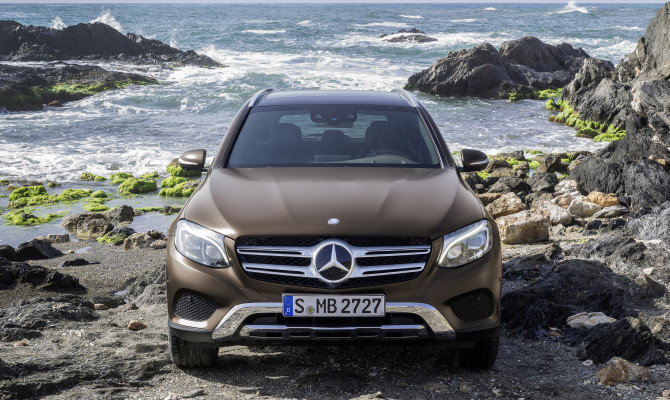
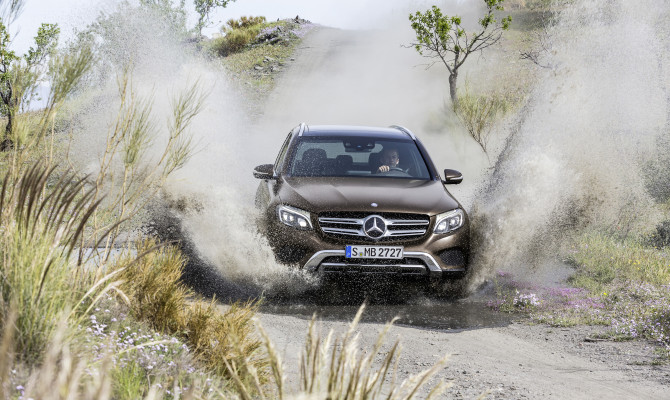
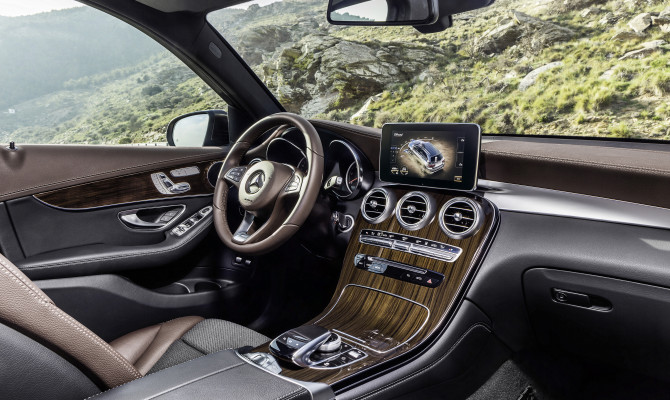
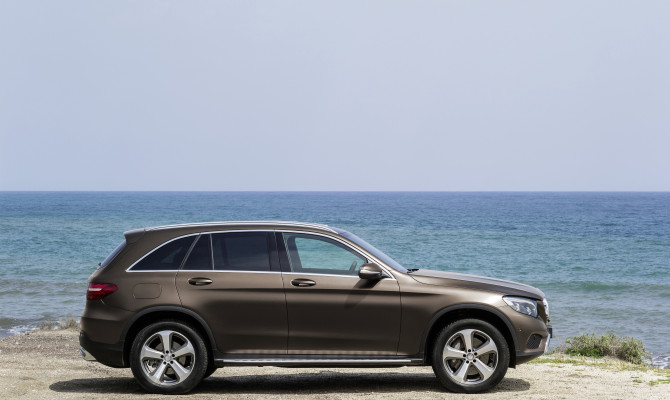
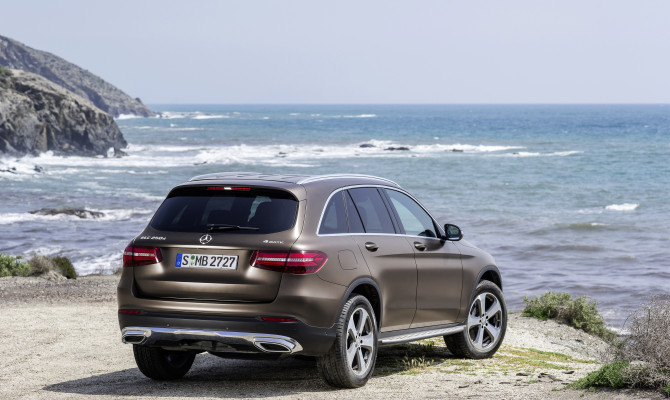
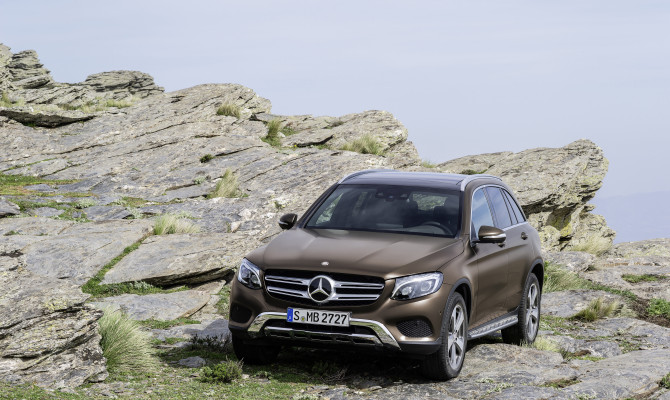
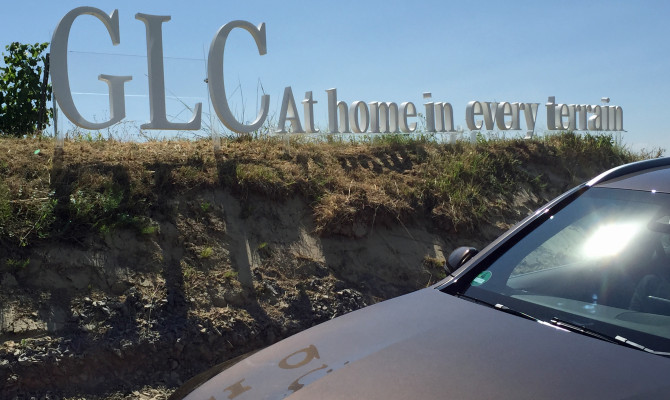
Alsace, France.
The route taken for the launch of the 2016 Mercedes-Benz GLC SUV was cruel and unusual punishment for some of us.
The navigation system guided us through a spectacular drive of more than 500 kilometres, which started and concluded in Basel, the Swiss city straddling the Swiss, French and German borders. First, we motored to Strasbourg, the capital of Alsace, and then returned the next day via the Vosges Mountains and the Munster Valley.
Cruel? – Well, for the oenophiles among the participating media group having to pass without tasting at the many historic Alsace vineyards along the way made one weep. It was just as bad for the beer-swillers who whiffed the smell of hops as they dreamed about sinking a chilled Kronenbourg.
Those, for whom food excites, had their taste buds tickled. They wolfed down amazing soft cheeses and cold cuts at the roadside. A curious donkey and a family of storks observed our feeding frenzy from a nest on high.
The mental torture was eased by an extremely pleasurable drive in this premium mid-range, second generation SUV from Mercedes-Benz, which replaces the GLK moniker with GLC reflecting its mechanical similarities to the C-Class sedan.
I won’t wax lyrical about the shape and looks, the pictures here tell that story. It’s a little longer and wider, meaning those aboard get more space in which to lounge and enjoy the luxury this top German brand typically offers. And, of course, more space for groceries and golf clubs.
A tablet-like 7-inch screen sits above three large air vents, mounted at the top of the centre stack, which features a well-placed controls touch pad in the lower console.
Back to the drive. Firstly, the test cars were pre-production Euro-spec 250s but we did get to take to the winding, often mountainous roads in a version that will more closely resemble the Canadian 300 4Matic. The same 2.0 turbo-four gas engine we get, though light of around 33 horses, powered it.
The GLK-spec 3.5-litre V6 is gone but worry not, if I might be crude, the four banger, coupled with the new 9G-tronic transmission, is more than adequate on the freeway – zero to 100 km/h in 7.3 seconds – and up those hills. And it was quiet in that cabin.
Incidentally, the GLC will use four-cylinder power in all versions – gas, diesel and plug-in gas/electric hybrid. Economy ratings are expected to be in the low 8s L/100kms in the city, low 6s on the highway.
Dynamic Select is standard fare, allowing the driver to switch between Eco, Comfort, Sport and Sport+ modes. The tester was also equipped with the optional Air Body Control, which improves on its predecessor’s Airmatic system ability to smooth out the ride.
Mercedes boasts that the GLC is at home on any terrain. Most of those purchased will become city dwellers, destined to hunt in shopping malls, but the drive proved the GLC is more than capable in the wild.
Sadly, the Off-Road Engineering package will not be offered in Canada. An off-road course included a 38-degree incline, which my drive partner Regina Chan expertly scaled, tilted about 25 degrees at one point!
The standard safety package is extensive and notably includes Collision Prevention Assist, which warns of an imminent crash and helps to apply the brakes, and the self-explanatory Passive Blind Spot Assist.
I’m a sucker for M-B’s Intelligent Drive concept. The various systems take data from the various sensors to boost comfort and safety. Systems that think and act somewhat quicker than your average driver!
The first Canadian models will be gas-powered, a turbo-diesel comes in the 2017 model year and a plug-in hybrid is scheduled for 2018. A Coupe version is on the way but no date yet.
The base sticker price is $44,950 but take it up to the premium package, with COMAND navigation and a superb panoramic roof, and you are nudging 50 grand. Load in those extra tricky active safety technologies and you soon hit the mid-50s.
VIDEO: Mercedes-Benz TV: The new GLC – Trailer
“The fuel cell Tucson can go 420 kilometres on one tank of fuel, a range about which electric car manufacturers can only dream.”
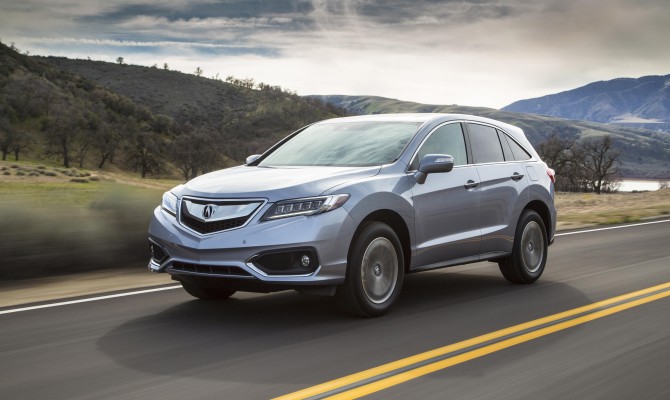
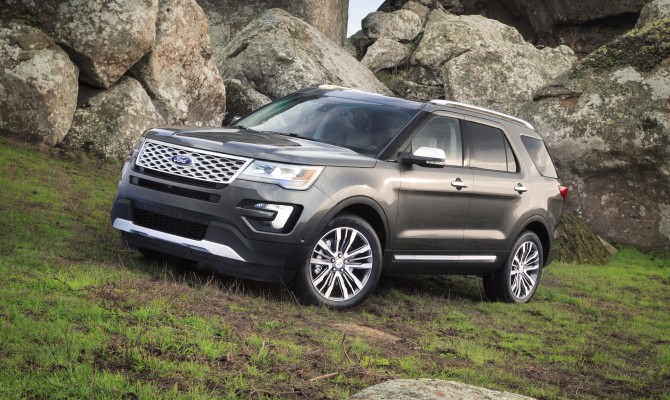
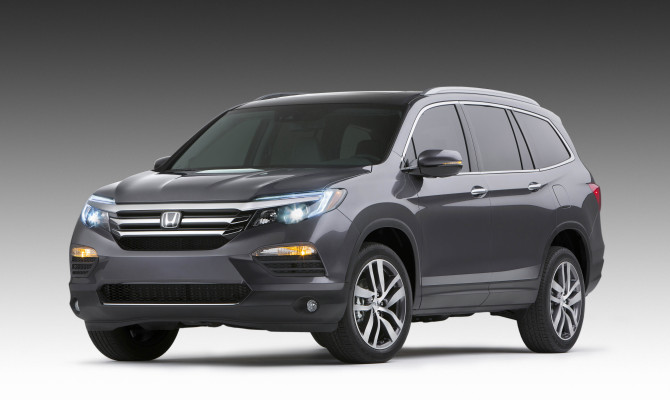
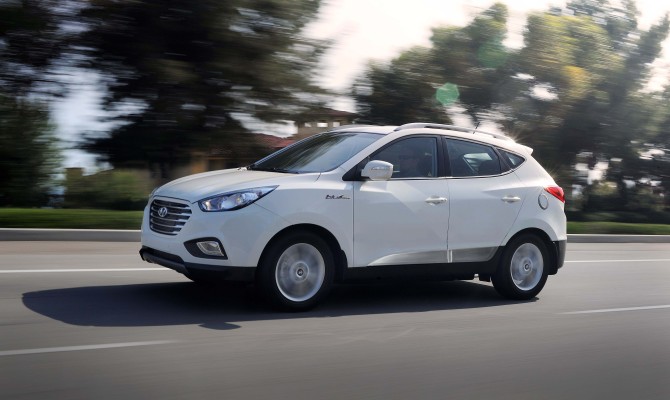
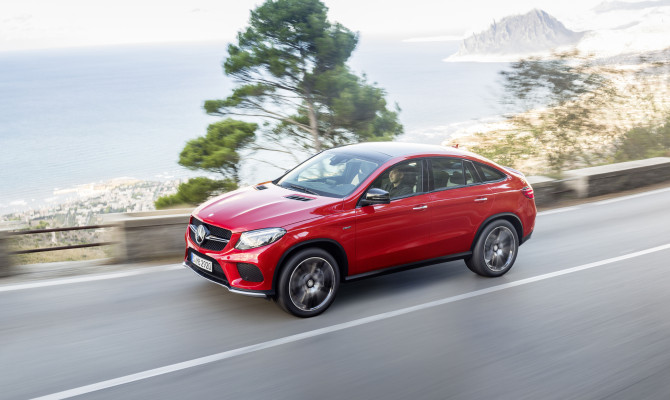
Several new crossovers will be featured at this year’s Vancouver auto show.
Honda recently revealed for the first time at the Chicago and Toronto auto shows, the all-new Pilot. Gone is the boxy three-row vehicle, replaced by a sleeker, more stylish design. Now equipped with LED headlights and LED daytime running lights, along with available 20-inch wheels and panoramic sunroof, this is a modern take on family hauling. The Pilot is powered by a 3.5L V6 engine, matched to a six-speed automatic transmission or an optional nine-speed unit. This new model will be sold with front or all wheel drive and because it is 135kg lighter than the last model it should be more efficient.
Mercedes is renaming the M-Class as the GLE. GL refers to an SUV/Crossover and the E is the “E-Class of SUVs”. To confuse things a bit more, the first debut is the GLE Coupe, a sportier coupe-like SUV designed to compete with the BMW X6. This Mercedes, with its sleeker silhouette and powerful 262-hp biturbo V6, looks great. It will range from comfort to all-out performance.
The Acura RDX has been a big hit for this premium brand. Based on the ever-popular Honda CR-V, this Acura is filled with lots of luxury touches for a modest price. The 2016 RDX showcases the latest look of the Acura family. The dual LED headlamps and improved interior design, including two screens in the centre of the dash, puts the RDX in line with the new TLX and recent MDX. Good news is that the trusty V6 engine will stay for 2016.
Hyundai has announced that they it will start leasing Hydrogen Fuel Cell Tucson SUVs to Canadians this year, with the Vancouver area being the first market to receive these world-class vehicles. This is an electric SUV but instead of getting electricity from the grid it is produced using an onboard hydrogen fuel cell. The owner fills the fuel tank with hydrogen, not gasoline, and drives normally. The fuel cell Tucson can go 420 kilometres on one tank of fuel, a range about which electric car manufacturers can only dream.
Ford has one of the best selling SUVs of all time in the Explorer, with more than 350,000 sold in Canada so far. The all-new 2016 version made available a 2.3L EcoBoost engine on the base and XLT trim. The 290hp 3.5L V6 engine is carried over but the Sport trim and new Platinum trim will be fitted with the 365hp Ecoboost V6. The new Platinum model will be fitted with real aluminum and ash wood accents, plus leather will trim the steering wheel, instrument panel, armrests, doors and other trim.
Range Rover has two new versions of the Range Rover Sport. The most popular will be the all-new 3.0L diesel engine that produces a whopping 440 lb.-ft. of torque and better fuel consumption. In fact, Range Rover claims a 32 percent improvement over the regular V6 model. On the high performance end is the Range Rover SVR, capable of a run to 100 km/h in just 4.7 seconds. This will be the first Range Rover to sport the new SVR (Special Vehicle Racing) badge.
Prices remain to be finalized on most of these vehicles at press time.
“The Mercedes-Benz B-Class is probably the safest compact car sold in Canada.”
Mercedes-Benz Canada went (adventurously) solo and brought the B-Class (not sold in US) to Canada in 2006, just as did with the original Smart Car.
The tall, compact, front-drive hatchback, is a different kind of Mercedes. Yet many Canadian buyers like it and typically buy about 3,000 of them annually.
We join the B-Class story when it got a modest redesign for the 2009 model year. Styling revisions included a new radiator grille with an extra-large Mercedes-Benz star in the centre. The front bumper has a larger air intake and the hood was also modified. Rear revisions included two-piece tail light assemblies, a new hatch release and a new-look rear bumper.
B-Class vehicles have a unique safety feature built-in to its elevated floor-pan design. Mercedes calls it the “sandwich principle” and during a severe frontal impact the powertrain assembly is cleverly engineered to slide downward, under the cabin compartment, to avoid intrusion into the passenger space.
The ’09 B-Class came in B200 and the B200 Turbo models. A B200 comes with a 134-hp, 2.0-litre inline-4 engine mated to either 5 speed manual transmission or a CVT (continuously variable transmission) automatic. The reliability of this CVT is questionable and in 2011 model year vehicles it was the spotlight of a major recall. It can be an expensive repair, if not covered by Mercedes.
This torque-rich gas engine is a frugal fuel user that’s rated at 10.5 litres/100 kilometres in the city and 8.6 litres/100 kilometres on the highway with the CVT and using the new 5-cycle rating method. The manual transmission allows slightly better highway fuel economy.
The turbocharged variant of the 2.0 litre engine boasts an impressive 193-hp, and is paired with a 6-speed manual transmission or the optional CVT automatic. This engine is rated at 10.9 litres/100 kilometres in the city and 8.8 litres/100 kilometres on the highway with the CVT and using the new five-cycle rating method. So you should get a lot better performance with almost the same fuel economy.
B-Class went essentially unchanged for the 2010 and 2011 model years and was temporarily discontinued for the 2012 model year. It returned as the completely redesigned B250 for the 2013 model year and there were no major changes for 2014.
Standard features in 2013 included a fuel saving auto stop-start system, LED daytime running lights, leather seating, 11 airbags, run-flat tires, plus Attention Assist, and Collision Prevention Assist systems. Yet, it still had an under-$30,000 start price.
A new direct-injection four-cylinder turbo engine (208 hp) linked to new seven-speed dual-clutch automatic transmission was the only powertrain combo offered (no CVT). This engine can also produce an impressive 258 lb-ft of torque and it can move a B250 to 100 k/hour in less than eight seconds.
While this engine does like pricey premium fuel, it’s rated at 9.2 litres/100 kilometres in the city and 6.6 litres/100 kilometres on the highway using the 5-cycle rating method. The new automatic obviously has an important role in attaining those impressive highway economy numbers.
The Mercedes-Benz B-Class is probably the safest compact car sold in Canada. Its brand-new (2015) start price is still under $30,000, however, popular add-on option packages can quickly push its end price into the high thirties and this also influences typical resale values.
Price Check: 2009 – 2014 Mercedes-Benz B-Class (March 2015)
Year Edition Expect to Pay Today
2009 B200T $12,000 to $15,000
2010 B200T $14,000 to $17,000
2011 B200T $17,000 to $21,000
2013 B250 $25,000 to $30,000
2014 B250 $29,000 to $34,000
Prices vary depending on a used vehicle’s condition, mileage, usage and history. A complete mechanical check should always be performed by a reliable auto technician prior to purchase.
Safety Recalls: 2009 to 2014 Mercedes-Benz B-Class:
2011: An internal transmission drive belt may fail on vehicles equipped with a Continuously Variable Transmission (CVT). Dealers will inspect and, if necessary, replace the CVT gearbox assembly.
“With four distinct trim levels, the Chrysler 200 can match the wherewithal of many pocketbooks while employing the latest in safety and technology to deliver an affordable upscale driving experience…”
by Rob Rothwell
Driveway Canada
You can pay a fortune for a premium brand but you needn’t break the bank to buy wheels with style.
Chrysler 200 (starting MSRP $19,945)
Chrysler stunned the marketplace with the introduction of its completely new 200 Sedan, resetting benchmarks for style, panache, and performance within a fiercely competitive segment. And with a starting MSRP of just $19,945, the 200 undercuts many of its competitors, yet its real strength is found in its range of trim levels and power options. The base engine is a 2.4L four-cylinder affair that feeds 184 horsepower to the front wheels through a segment-exclusive nine-speed automatic transmission. Going upscale in the 200 brings with it Chrysler’s powerful 295 horsepower Pentastar 3.6L V6 engine paired with the nine-speed autobox and all-wheel-drive traction. Standard features include eight airbags, Keyless Enter ‘n Go, and Chrysler’s Uconnect 3.0 multimedia centre. Options include Blind Spot Monitoring, Adaptive Cruise Control with Stop and Go, Forward Collision Warning with Active Braking, and Active Park Assist. With four distinct trim levels, the Chrysler 200 can match the wherewithal of many pocketbooks while employing the latest in safety and technology to deliver an affordable upscale driving experience.
Fuel Economy:
2.4L I-4 10.2L/6.4L100km city/highway
3.6L V6 12.4L/7.5L100km city/highway
Acura TLX (base MSRP $34,900)
The four-door Acura TLX Sedan replaces the former TSX and TL sport sedans, merging their respective strengths into a single product positioned as the brand’s mid-level contender. With a base sticker of $34,900, the TLX delivers plenty of sport-inspired luxury built around a 206 horsepower 2.4L four-cylinder power plant fused to an eight-speed automatic transmission. Propulsion is directed frontward unless the V6 Technology Package and Acura’s Super-Handling All-Wheel-Drive system with torque vectoring are opted for. In which case, all four wheels share in 290 horsepower produced by the 3.5L SOHC i-VTEC mill. A sophisticated nine-speed automatic transmission further contributes to the engaging performance of the V6-powered TLX. In addition to a more rigid body structure, the TLX provides increased safety and collision avoidance with the use of technology such as Jewel Eye LED headlights, Lane Departure Warning, Forward Collision Warning, and Blind Spot Information with Cross Traffic Warning. Comfort and convenience essentials include the availability of premium 10-speaker audio along with voice-activated navigation.
Fuel Economy:
2.4L I-4 9.6L/6.6L/100km city/highway
3.5L V6 11.2L/6.9L/100km city/highway
Audi A3 (base MSRP $31,100)
Looking remarkably like the highly successful Audi A4 Sedan despite casting a shadow 245mm shorter, the new A3 Sedan is sure to capture the attention of entry-level Audi buyers that scorn the A3’s hatchback design despite the vehicle’s praiseworthy driving dynamics and general practicality. Pricing for the new A3 Sedan starts at $31,100 with the 170 horsepower 1.8L TFSI I-4 power plant turning the front wheels through the auspices of Audi’s six-speed S tronic automatic gearbox. Upping the ante to $35,900 secures a 220 horsepower 2.0L TFSI I-4 connected to all four corners via Audi’s quattro all-wheel-drive technology. Diesel power is also available in the A3 Sedan, though paired only with front-wheel-drive. Option combinations include Audi’s Styling Package, Navigation Package, and their sport-oriented S line Package. Audi has always been a technology leader, and the A3 Sedan shares in that reputation with a vast array of onboard safety and protection systems.
Fuel Economy: TBD
Mercedes-Benz C 300 Sedan – C400 Sedan (base MSRP C 300 $43,000 – C400 $51,400)
Despite slotting beneath the venerable E-Class in the Mercedes-Benz hierarchy of sedans, the new C-Class Sedan takes on a notably formal appearance and a more upscale demeanor for 2015. It’s also lighter and more powerful thanks to the extensive use of aluminum and a pair of revised engines. The C 300 receives a turbocharged 2.0L I-4 power plant capable of 241 horsepower. Need more oomph? A 3.0L twin-turbo V6 places 329 horsepower under the hood of the C 400. Both engines feed all four wheels through Mercedes-Benz’s 4MATIC all-wheel-drive technology. The sole use of 4MATIC is a Canadian-market exclusive. Along with new sheet metal and a lavishly-appointed cabin, the C-Class is equipped with the latest generation of COMMAND by Mercedes-Benz. This highly sophisticated infotainment/navigation system is lifted directly from the S-Class flagship. Audiophiles will appreciate the availability of Burmester surround-sound audio components, which are hand-made in Germany.
Fuel Economy:
C 300 10.9L/7.5L/100km city/highway
C 400 11.1L/8.4L/100km city/highway
BMW 228i – M235i (base MSRP 228i $36,000 – M235i $48,750)
Reminiscent of the legendary 1968 BMW 2002 Coupe, today’s 228i and M235i Coupes combine the outstanding driving dynamics of the stubby BMW 1-Series Coupe, which they replace, with a sleeker, more aggressive interpretation of the iconic brand’s ethos. The 228i is the tamer of the pair, but with 241 horsepower and 258 lb.-ft. of torque, its 2.0L twin-turbocharged I-4 engine delivers highly spirited performance nonetheless. If outright exhilaration is the target, the M235i is the ticket. Its twin-turbocharged 3.0L I-6 mill produces 322 horsepower and 332 lb.-ft. of endless torque. For true driver-oriented motoring, both vehicles can be fitted with a 6-speed manual gearbox in place of the new 8-speed automatic transmission. BMW’s xDrive all-wheel-drive traction is also available, but can only be paired with the automatic transmission. With the availability of a manual gearbox backed by a choice of turbocharged power plants, the new BMW 2-Series may just be the “ultimate driving machine.”
Fuel Economy:
228i 9.1L/5.6L/100km city/highway
M235i 11.2L/7.1L/100km city/highway
The classic car world is possibly one of the most opinionated collecting pursuits known to man, and nearly everyone seems to have an opinion on relative values and desirability.
Each car on the list has at one time or another been deemed by “experts” to be hopeless as a collectible and each has one thing in common – they’ve skyrocketed in value.
1956-58 Studebaker Golden Hawk
Poor Studebaker, the cars of the ill-fated favorite son of South Bend, Ind., never seemed to get the same love from collectors as the cars of the Big Three. But they may be getting the last laugh. (more…)
Recent Comments
- { Enjoyed your Forest of Bowland in the BMW X5M, particularly the photo of the BMW in front of the main part of Stonyhurst College where... }
- { Bantam designed the Jeep, not Willy's or Ford. The American military gave the original Bantam prototype to Willys and Ford to copy. There is plenty... }
- { All Escalades come with a 6.2-lilter V8 engine that produces 420 horsepower. A six-speed automatic is the only transmission offered and drives the rear wheels.... }
- { Alexandra is an excellent journalist. }
Popular Posts
- Journey to a ‘Sparkling’ Luxury Okanagan Resort “Four lucky readers will put a Dodge Journey’s weekend-...
- The Need For Speed: Hike Those Highway Limits More than half of those polled believe the province sho...
- Drives-U-Crazy… Erratic drivers. An early morning drive from Kelowna to Vancouver is nor...
- Readers Respond: The Pros and Cons of Increasing B.C. Speed Limits Increasing the speed limits will only increase risk to...
- Honda CR-V Review: The Compact Crossover To Get Things Done The CRV is a very stylish and aerodynamic crossover veh...


